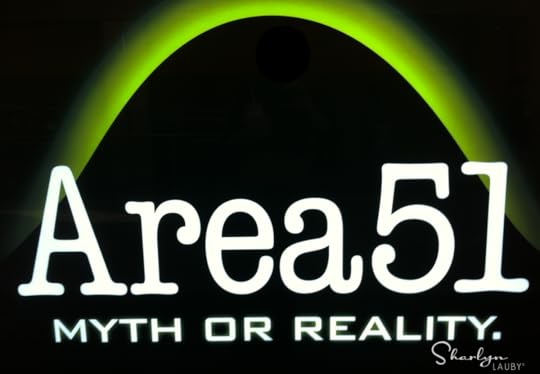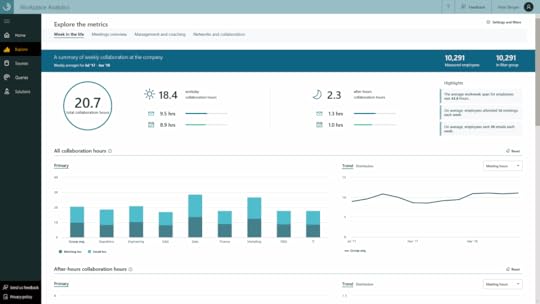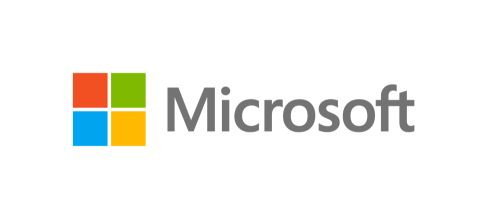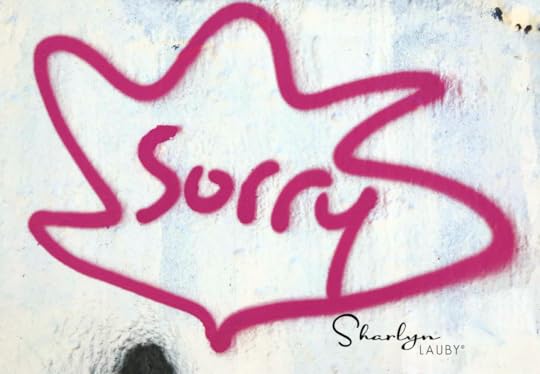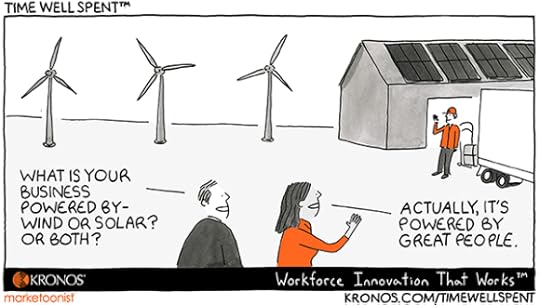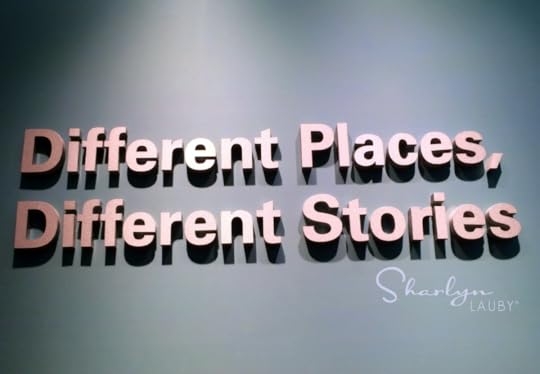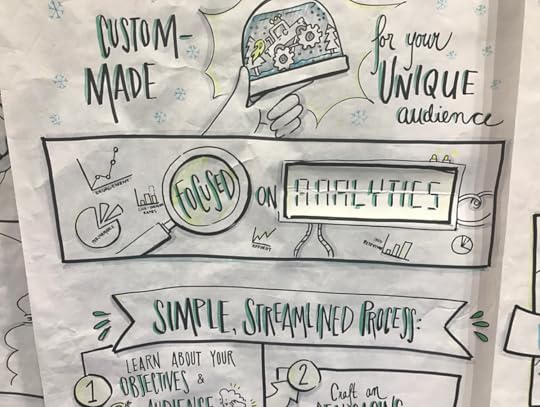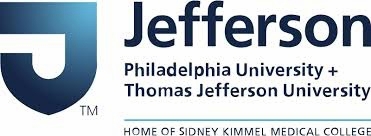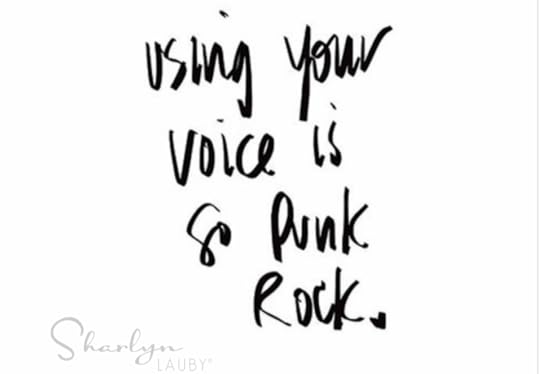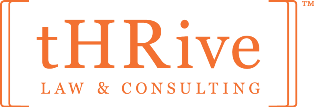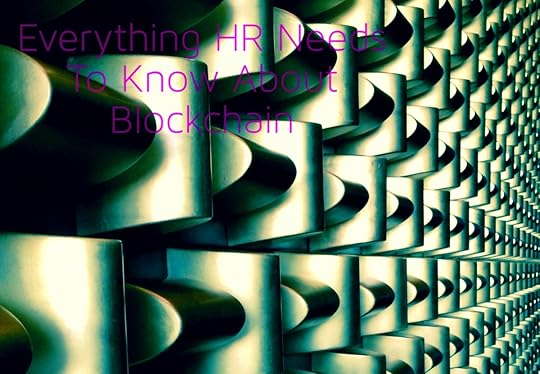Sharlyn J. Lauby's Blog, page 110
September 27, 2018
5 Tools That Can Help You Plan Better
I admit that I’m a planner.
But more important than admitting that I plan everything is that I really like to plan. I believe it’s because I invest in planning tools.
Tools to help you plan do not have to be expensive. They do need to work. For you. Someone else’s planning tools may or may not be the best for you. In addition, while it would be awesome to have one planning tool that does everything, I haven’t found that to be the case. At least for me. Different tools do different things. Here are five planning tools I use on a regular basis and why I use them.
Fantastical 2– I use an iMac as my desktop and Microsoft Surface Book as my latptop. On my laptop, Outlook is my calendar but, on my desktop, I use Fantastical 2. It syncs with Outlook so I’m not entering events twice. But I do like the Fantastical interface. One of the things I do on my calendar is color code entries. It helps me to visually understand how much time I’m spending on a particular activity or project. It also tells me if I’ve allocated enough “me” time. If I don’t see enough purple (which is my color for fun or me time), then I plan to do something about it.
Erin Condren Life Planner– There are other planners out there that I like very much like Plum Paper and Passion Planner. The past couple of years I’ve been using an Erin Condren Life Planner. I like that I can customize the look to my personal style and note taking preferences. It’s a great place to take notes during conference calls (and not lose them!) Or to jot down important information like a case number when I call the utility company or maybe a cancellation number. I also like to put sticky notes on dates, so I don’t accidentally double book myself.
Color Block Memo Notepad from Rifle Paper Company – I’ve mentioned before my love of paper. This company has beautiful papers. They also have great iPhone covers. But I digress. One of my favorite items from Rifle Paper is a notepad with the days of the week on it. Need to remember to call the bank on Thursday? I just got it on this notepad. It’s also great when I travel. I can carry one piece of paper with reminders for the week. I don’t have to be glued to my electronic calendar. And I don’t have to carry a bulky planner.
Noodle Notes from Free Period Press – I’ve been a fan of Free Period Press since they sent me my first adult coloring book. Since then, they’ve expanded their products to include a mantra coloring book and post cards. Their latest is called “Noodle Notes” and it’s simply a small notebook with places to color. I like it because it’s lightweight and I can use it for conference notes. Many times, I like to have a dedicated notebook for a conference, but I don’t need 100 pages. Noodle notes allow me to have the perfect size small notebook. It’s ideal to toss in my travel bag.
Jan-Dec and 1-31 Accordion Files– I don’t like to work in clutter. I try to keep as few things on my desk as possible. But there are things I want to keep for future reference. Years ago, a colleague shared her system and I still use it to this day. If I get a conference brochure that I want to look at in November, then I put it in the Nov tab in my accordion file. At the beginning of November, I take everything out of the tab and assign it a date in the 1-31 accordion file. Maybe I want to look at the conference brochure on November 15. It not only keeps the clutter off my desk, but it gives me peace of mind that the brochure will be there when I need it.
Planning is a very personal thing and what works for one person might not work for someone else. But it is necessary to plan. Maybe you don’t have to be an off-the-charts planner like me, but you still need to plan. And if you hate planning, maybe it’s worth checking out a few new things that will help you to actually like planning. Because if you like planning, you’ll do it. And if you do it, you’ll see results.
Image captured by Sharlyn Lauby at the National Atomic Testing Museum in Las Vegas, NV
The post 5 Tools That Can Help You Plan Better appeared first on hr bartender.






September 25, 2018
Transform Company Culture with Good Communication Analytics
(Editor’s Note: Today’s post is sponsored by Microsoft, whose mission is to empower every person and every organization on the planet to achieve more. They have a website dedicated to Modern HR, a content collection focused on digital transformation. Check it out when you have a moment. Enjoy the post!)
I’m starting to hear more people use the phrase “Culture is the new currency.” as a way to describe how important it is for companies to have a culture that attracts, engages, and retains talent. That shouldn’t be a surprise. During the Society for Human Resource Management (SHRM) Annual Conference this summer, Dawn Klinghoffer, Microsoft’s head of people analytics, mentioned that 86 percent of companies say they’re trying to change culture. The question becomes how exactly do organizations accomplish that?
Klinghoffer talked about the role communication and technology play in influencing organizational culture. In fact, she jokingly referenced how many organizations have what could be termed an “email culture”. I know many of you are smiling as you’re reading this because you know exactly what I’m talking about. And you also know, there’s only so much we can do via email.
But let me be the one to say that the answer isn’t to eliminate email. It has a purpose. A relevant and valuable business purpose. We just need to get smarter about when and how we use it. I’ve said before that it sometimes amazes me for a technology medium like email that has been around decades, it has very few globally accepted business rules. But that could be changing.
4 Ways to Evaluate Workplace Communications
The team at Microsoft have put together ananalytics toolthat evaluatesorganizational communications and provides reporting and tips for communicating more effectively. Microsoft Workplace Analytics is an organizational data insights tool that showcases broad trends and habits within an organization. I had the chance to do a quick test drive during the SHRM conference. Here are the four qualities that Workplace Analytics can measure:
1. Facetime. We know that the first key to employee engagement is relationships, meaning that managers need to spend time getting to know and building positive working relationships with employees.
Workplace Analytics can measure the amount of time that managers spend in one-on-one meetings, which could be an indicator of how much time managers are spending focused on relationship building.
2. Balance. If we want our employees to practice wellness and well-being, then we need to lead by example. Even when we say, “You don’t have to answer emails over the weekend.” Employees still get stressed out when the boss sends an email.
To help move organizational-level goals toward better work-life balance, Workplace Analytics tool tracks the amount of time employees spend in meetings or working after hours.
3. Network. Having an internal and external network is important for an employee’s career success. This starts with building peer relationships during onboarding.
WorkplaceAnalytics provides insights on how much time new hires are spending not only with their manager, but with peers, and how information is flowing across networks. The data is presented in aggregate and de-identified and is not designed to be used on teams of less than 5 people.
4. Outcomes. Employees often spend more time collaborating with peers on projects than they do with management. It’s important to understand how employees are communicating with each other.
Workplace Analytics provides a dashboard that demonstrates how teams collaborate to set achievable goals that help the team and business. Managers can act on these insights using the solutions feature which acts as a bridge between Workplace Analytics and teams of employees.
Case Study: Freddie Mac Transforms the Workforce
A couple of weeks ago, I shared with you an infographic from Microsoft that outlined the steps that organizations can use to create a digital transformation. Workplace Analytics is one of those tools. And here’s an example of how an organization has pulled all of the pieces together.
Freddie Mac (also known as the Federal Home Loan Mortgage Corporation) is a public government-sponsored enterprise based in Virginia with roughly 6,000 employees. Now, before you say, “Oh well this is a huge organization, we won’t be able to realize the same results.” Watch the video. I thought the points made about refocusing the sales team could happen with any size organization in any industry.
https://www.hrbartender.com/wp-content/uploads/2018/09/Freddie-Mac-and-Workplace-Analytics.mp4
Technology and Analytics Can Transform the Business
The key to digitally transforming your organizational culture is to move from a fixed “email driven” mindset to one that realizes technology can grow and enhance the culture. It does involve supporting the right technology and using technology tools to empower and engage employees.
Technology investments are employee investments. Whether it involves creating better connections between employees and customers through the bundling of technology tools or improving communications between employees and management with open digital communities, technology can transform the business by increasing productivity and collaboration.
If you’d like to learn more about how technology tools like Microsoft’s Workplace Analytics can transform your workforce, check out this short video and sign up for a demo.
Microsoft logo used with permission
The post Transform Company Culture with Good Communication Analytics appeared first on hr bartender.






September 23, 2018
Should An Employee Resign or Wait to Be Fired – Ask #HR Bartender
Today’s reader question is a tough one. Should an employee resign or wait to get fired?
I have been asked to resign for breaking a company policy. It was not my job to report an incident that occurred. But I did anyway and notified my supervisor, who says I did not. I have no witnesses or documentation to prove my story. Do I have a leg to stand on?
Unfortunately, there’s not a lot of detail here. But in thinking about a response, it occurred to me that we’ve talked about some similar scenarios in the past. So, I’ve put together this list of resources that hopefully can help.
Sometimes before employees are asked to resign or directly terminated, they’re placed on suspension. This article goes into “What to Do If You’re Placed on Suspension”.
The reader note doesn’t mention HR at all so I’m not sure if they play a role in this situation. But here’s a good read on what to consider when “HR Failed to Investigate an Incident”.
And if HR was involved and they call you in for a meeting. Here’s the answer to your question about “Can You Bring Your Mother to a Meeting With HR”.
The reader note does mention that “Management Is Not Helping Me”.
This situation deals with failure to report an incident. This article focuses specifically on whether an employee “Can I Get Fired for an Accident”.
This article addresses the question “Should I Quit or Wait to Get Fired”. Different employee situation. The logic might apply.
Should an employee choose to resign, here’s “How to Resign from Your Job Properly”.
This post on “Ending the Employment Relationship” talks about requests to get copies of your personnel file. And this article on “Final Paychecks: Do’s and Don’ts” can give you some background information about when and how your final paycheck should be processed.
Finally, I’m not advocating that every employee takes this route but sometimes it might make sense. “Employees: Know When Should You Lawyer Up”
I want to extend a huge thanks to the attorneys who help me answer these questions on a regular basis. They don’t have to say “yes” when I call, but they do. And for that, I’m eternally grateful. I hope their words of wisdom help.
Image captured by Sharlyn Lauby at the 34th Street Graffiti Wall in Gainesville, FL
The post Should An Employee Resign or Wait to Be Fired – Ask #HR Bartender appeared first on hr bartender.






September 21, 2018
Employees Are Your Business Differentiator – Friday Distraction
(Editor’s Note: Today’s post is brought to you by our friends at Kronos , a leading provider of workforce management and human capital management cloud solutions. They were recently recognized as a for their WorkInspired culture. Congrats to them. Enjoy today’s article!)
Today’s Time Well Spent from our friends at Kronos totally reminded me of the interview I did with Gregg Gordon, vice president of Kronos’ data science practice group, about his book “Your Last Differentiator: Human Capital”. I hope you’ll check it out.
I’ve always worked for companies where the product or service wasn’t the star of the show. All hotels have rooms and beds. And all airlines have seats. It’s the employees who make the experience in business. I’ll give you an example.
I was recently on a business trip, staying at what would be considered a no-frills, extended stay hotel. The first night I was there, I decided to pick up a frozen meal for dinner. The front desk clerk noticed that I was spending a very long time trying to decide between lasagna or chicken and said to me, “You know, a lot of guests get the pizza. It’s pretty good.” So, I did … and it was.
The next day, the front desk reminded me that I had two free bottles of water available. And they apologized for not remembering my name. I’m like, “I’ve only been here a day and a half. I don’t expect you to have my name memorized.”
The point being, the front desk didn’t have to do any of these things. In fact, we both probably know some hotel chains where the front desk is told “Don’t give away the water unless a guest specifically asks. It’s expensive you know.” But just those couple of nice comments made my business trip special – and memorable.
This isn’t to say that the company’s products and services aren’t important. Good customer service doesn’t replace a terrible product or service. Customer service can often be easier with a good product or service.
As the company makes business investments in products and services, they also need to make investments in customer service training. That includes problem-solving and decision-making. Employees should be empowered to take care of customers. That way, everyone wins!
The post Employees Are Your Business Differentiator – Friday Distraction appeared first on hr bartender.






September 20, 2018
Recruitment Marketing: How to Conduct A/B Testing
When I’ve written job postings, there have been a few times when I’ve asked myself, “Is that the right word?” or “Will candidates outside the company understand this?” It would be great to find out answers. Well, we can by using a technique called A/B testing.
In short, A/B testing is when you create two messages that are exactly the same except for one factor and then measure which message performs better. It’s important to note a couple of things about this definition:
Keeping the distinction between one-factor. If there’s only one factor difference, then you know what candidates are responding to – the one factor that was different. If we change two or three factors, then it would take several iterations to figure out the best combination of elements. That could be a challenge from both a time and resources perspective.
Understanding what “better” means. Let’s say that we conduct A/B testing on a job posting. In Group A, we receive a lot of applications, but many are unqualified for the position. In Group B, we receive a small group of applications, but a vast majority are qualified for the role. If the goal was quantity, then Group A achieved the result. If the goal was quality, then it’s Group B.
One of the reasons I’ve been thinking about A/B Testing lately is I wonder if organizations are using this technique to refine their sourcing strategy. I could see it making sense to run A/B Testing with two different job titles. Especially if you work for a company or industry that uses unique titles. For example, if you’re recruiting for an accounting ninja, is that the same as a payroll clerk? Or if you’re hiring an administrative assistant III, would that be comparable to an executive assistant?
Titles aren’t the only type of A/B Testing. It could make sense to examine the benefits being promoted or the company values being marketed in recruitment messaging. What is the right combination of words or phrases that gives you the result you’re looking for?
If you haven’t considered A/B Testing, now is the perfect time to start testing it out. Create small experiments and evaluate results. Slowly your recruitment messaging will come into focus. That way, you don’t have to wonder – like I did – if you’re messaging is on target.
Image captured by Sharlyn Lauby after speaking at the Society for Human Resources Annual Conference in Washington, DC
The post Recruitment Marketing: How to Conduct A/B Testing appeared first on hr bartender.






September 18, 2018
Your 2018 Social Recruiting Strategy: Remember These 7 Key Elements
(Editor’s Note: Today’s post is brought to you by Jefferson Online, a comprehensive university with preeminence in transdisciplinary, experiential professional education, research, and discovery, delivering exceptional value for 21st-century students. An online human resources degree from Jefferson Online can help provide you with the skills you need to be an effective recruiter today and tomorrow. Enjoy the post!)
Successful recruiters know what job seekers want – the most qualified candidates.
And for job seekers, finding a job is increasingly about who you know (versus only what you know). Though job boards are still a popular source, only 15 percent of job seekers were hired through job boards, according to a 2014 U.S. News and World Report. And those numbers don’t appear to have changed much since then.
Networking – whether that’s via the company’s employee referral programs or social media – is where much of today’s recruitment is occurring. According to a Society for Human Resource Management (SHRM) survey, more than one-third of organizations have begun targeting smartphone users for recruitment, and 84 percent are using social media to do so. Match those numbers with 57 percent of job seekers using social media to research employers and job openings and it’s clear that companies need to invest in social recruitment.
What Is Social Recruiting?
I know this might sound like an old conversation, but the reality is that organizations aren’t taking full advantage of what a social recruiting strategy can bring to their recruitment efforts. Recruiting from social media isn’t as simple as posting your job on Twitter and waiting for applications to start rolling in. It requires forethought and execution. Here are the seven key considerations when developing your company’s social recruiting strategy:
Build an agile recruiting team. A common statement I’m hearing from recruiters is “We have ten days to two weeks to engage with a candidate or we’ve lost them.” According to the digital marketing agency Meshworking, an organization’s recruiting team must have clear rolesand responsibilities from the outset, and they must have the agility to move quickly. In addition, companies need to ensure that they have honest discussions about their social recruiting goals.
Select the right platform for your message. Posting on every social media site isn’t typically a good idea; different social media sites involve different ways of communicating, and they cater to different audiences. Do your research about user demographics, then pick one or two sites to drive traffic to. The fewer sites you drive traffic to, the easier it is to maintain them and keep the content relevant to your intended audience. But, this doesn’t mean you can never change social sites (see #7).
Create compelling content. Speaking of content, knowing who you’re speaking to and what skills are important for the job you’re hiring for allows you to craft the right message in the right way, to better resonate with your intended audience. A simple link to a job posting can garner some interest, but it’s important to remember that the current unemployment rate is lower than it’s been in decades. Fewer people looking for jobs means they are more willing to shop around for the right job, and it’s incumbent upon employers to “sell” job seekers on their companies.
Focus on your company’s “wow” factor. Another recommendation that Meshworking makes is for organizations to emphasize the “wow” factors of their company. Ask yourself, “What’s the company’s mission statement and values? What makes the company unique? Has the company won any awards?” Combining this kind of content with employee testimonials can build both a sense excitement and transparency, which can attract job seekers to your company.
Test your online application process. It’s important to make sure the company’s application process works the way you think it does…andthe way it’s supposed to. If an applicant clicks through to a social media post and lands on a career website that’s clumsy or slow, you’re likely to lose many potential applicants. According to a study from recruitment company Appcast, recruiters can boost conversion rates by up to 365 percent by reducing the length of the application process to just five minutes or less.
Evaluate candidate fit. First and foremost, organizations need to be careful about using social media for unfair hiring or bias. There can be advantages in connecting with job seekers on social media. Organizations can see what kinds of topics applicants talk about, what their interests are, whether they behave professionally and who they’re connected to. Of course, none of this is a substitute for an in-person interview or skills test, but a social media profile can provide supplementary information to round out the candidate’s profile.
Use metrics to measure success. It’s important to measure the return on investment (ROI) of your social recruiting strategy. Decide when you start and how you’ll measure ROI, then track that data as you pursue your social recruiting strategies. Common metrics include number of applications received, number of interviews conducted and, ultimately, number of candidates hired along with their retention rates.
Let’s face it. Recruiting is hard. And with new sources proliferating, it can be confusing to know how to master all of it. Social media is still popular and growing. Organizations cannot abandon social recruiting – especially not now! So, dust off that old social recruiting strategy, grab your recruiting team, and update your social goals. Your organization can’t afford to ignore it.
The post Your 2018 Social Recruiting Strategy: Remember These 7 Key Elements appeared first on hr bartender.






September 16, 2018
When Employees Want to Go On The Record – Ask #HR Bartender
One of the common questions that employees ask me is about “going on the record”. It’s tough. That’s what today’s reader question is all about.
I’m new to the HR world and wonder the proper protocol for an employee coming to you with a complaint, which they just want on record; however, does not want to move forward with it.
This employee has given his notice and will be leaving our employment in a month. He has been told, by co-workers, that another employee is bad mouthing him publicly and is saying he has ‘checked out’. He does not want me to talk to the employee who is being accused of the bad mouthing and just wants it on record if it does become a bigger issue. His main concern is that his ‘name’ is being dragged through the mud.
Am I required to let the accused employee state their side or can I keep note of it as “just wanting to express his concern”? Thank you, in advance, for any input you may give me.
To help us understand this matter, I asked our friend Kate Bischoff to share her knowledge. Kate is an employment attorney and HR consultant at tHRive Law & Consulting LLC. She’s shared her experience with us before on a somewhat related matter in “HR Failed to Investigate an Incident”.
Kate, let’s start by talking a little bit about HR and confidentiality. Lots of employees (at every level) think when they tell HR to keep it confidential that we’re requiredto respect their wishes. Is that true?
 [Bischoff] Nope. There are specific circumstances where we need to keep things confidential, mostly health related, but often to do our jobs, we can’t keep things confidential. For example, we must keep medical information separate and secured and can’t share some items with others (including managers), but we can’t investigate harassment claims without talking to other people who may have witnessed the alleged conduct. We’d do a disservice if we didn’t investigate, and investigation means we have to talk about some things.
[Bischoff] Nope. There are specific circumstances where we need to keep things confidential, mostly health related, but often to do our jobs, we can’t keep things confidential. For example, we must keep medical information separate and secured and can’t share some items with others (including managers), but we can’t investigate harassment claims without talking to other people who may have witnessed the alleged conduct. We’d do a disservice if we didn’t investigate, and investigation means we have to talk about some things.
The law hasn’t been 100 percent clear on what HR has to keep things confidential. HR can’t ask employees to keep investigations confidential under the previous National Labor Relations Board (NLRB) rules (albeit we have a much more employer-friendly NLRB now) but the Equal Employment Opportunity Commission (EEOC) wants us to keep some things confidential so retaliation doesn’t happen. That said, HR has to be professional and get our jobs done without putting issues out in the employee gossip pool.
In this reader note, they talk about an employee bad mouthing another employee. Is that grounds for an investigation? Why or why not?
[Bischoff] It is certainly worth checking out. ‘Bad mouthing’ indicates a bad work environment. While it may not be a hostile work environment, there’s something people are unhappy about that HR should want to know about. HR doesn’t have to specifically call out the bad mouthing when talking with employees; but HR should go take this team’s temperature to see if there is anything going on. If the bad mouthing is happening, HR will find out when checking in with employees.
It’s not mentioned in the reader note, but since the employee is planning to leave the company, if they were to mention this during an exit interview, would the company be obligated to investigate? Why or why not?
[Bischoff] They’re not obligated under the law, but as I mentioned, it is certainly something I’d like to check out. This does not have to be a ‘formal’ investigation with an independent investigator or detailed investigation plan but chatting with the team should happen. Some sample questions should be asked such as:
“How are things going?”
“Are you concerned about TEAM MEMBER’s departure?”
“Is there anything I can do to help the team?”
With these, HR will learn if there are concerns that should be escalated or if a manager can handle the morale issues that I suspect exist. More importantly, HR will learn if a more formal investigation is warranted.
One of the aspects in the note that stumps me is the mention of “a bigger issue”. It almost sounds like foreshadowing. When an employee says something like “just in case” or “because it may become a bigger issue”, could HR respond? Or would be just be adding drama?
[Bischoff] I agree sometimes HR can add to the drama, but HR has to go find out if there is a bigger issue here. The foreshadowing suggests this individual has a sneaking suspicion that a bigger issue already exists.
Let’s imagine for a second that this was foreshadowing (or the employee was trying to under-the-radar report harassment of some sort). If HR doesn’t at least go chat with some of the team and there is something going on, a plaintiff’s attorney is going to argue that HR knew as soon as the departing employee hinted that something was going on. This would start the clock on the ‘timely and appropriate action’ the employer is required to take under the law. While I don’t see a need to launch a formal investigation right away, by ignoring this, HR could really put the organization on the hook by starting the clock on liability.
Last question. Managers and HR are often told things that they shouldn’t keep confidential. What is the best way for HR or a manager tell an employee (after they’ve already shared confidential info) that they can’t keep it secret?
[Bischoff] You say, ‘Thank you so much for telling me this. I understand it can be hard to share these things. In order to make this better for you and others, I have to do something about it, including talking to others who may have seen or heard about it. So, while I’ll do my best to respect your privacy and be careful not to cause harm, I can’t keep this 100 percent confidential. Just know that if anyone treats you differently because you talked to me, we won’t tolerate it. We have a strict retaliation policy that I have no problems enforcing. Ok?’
And when you say it, you have to mean it.
Speaking of meaning it, I want to give a HUGE thanks to Kate for helping us with this issue. If you want to read more of Kate’s insights (and I know you do), be sure to check out her blog.
As human resources professionals, we often have to use our Spidey-sense when employees approach us with concerns. My big takeaway from Kate’s comments is when you get that feeling, it’s better to err on the side of caution. Ask some questions. Get some guidance. Just make sure there’s nothing brewing.
Image captured by Sharlyn Lauby while exploring the interwebs
The post When Employees Want to Go On The Record – Ask #HR Bartender appeared first on hr bartender.






September 14, 2018
Training Decisions Have Real Bottom-Line Growth [infographic] – Friday Distraction
I always think of this time of year as “budget season”. You know, when organizations are thinking about what they’ve accomplished during the current year and the goals they want to achieve in the upcoming year. Not only is it great for performance, but it helps to create the budget.
In my experience, I found that when putting together the HR budget and department goals, I needed to come prepared with data. It wasn’t enough for me to say, “I believe this is happening …” or “I’ve heard that our competitors are doing …”. I had to come to the meeting with internal data in the form of cost per hire, turnover, exit interview analysis, etc. AND, external data about what was happening in the talent market.
This infographic from our friends at Saba is worth bookmarking for future reference.
Honestly, I don’t know that the bad hiring decision numbers were a real surprise. Turnover is expensive. But I thought that the section on onboarding and learning was relevant and valuable. There’s a huge positive connection between learning, productivity, and profits.
As organizations are focused on recruiting and retention, it makes sense to think about learning. If companies can’t find the talent they’re looking for, they will have to start building learning programs that will develop those skills from within.
Learning begins with onboarding. Organizations should start asking candidates about learning during interviews. Make sure that the individuals you’re hiring are prepared to view learning with enthusiasm. Design onboarding programs to be less about telling new hires what to do and more focused on training.
Teach employees how to be self-learners. We talk all the time about how individuals need to become lifelong learners. But have we really taught people how to do it? Becoming a lifelong learner is about developing self-awareness.
Feedback should happen at every level and in every direction. It’s time to push back on the notion that feedback only happens when a manager speaks to an employee. Employees need to provide upward feedback. Peer-to-peer feedback is very relevant.
As organizations start to look at next year’s goals and budgets, it might be time to elevate training on HR’s priority list. Because training decisions can increase productivity and improve profitability.
P.S. If you’re looking for ways to increase the ROI of your talent investments, I hope you’ll consider joining me and the Saba team for a webinar on “How to Use 1:1s to Support Career Development”. The event is Thursday, September 20, 2018 at 9a Pacific / 12n Eastern. And it’s been approved for SHRM and HRCI recertification credits.
The post Training Decisions Have Real Bottom-Line Growth [infographic] – Friday Distraction appeared first on hr bartender.






September 12, 2018
Employee Benefits: 6 Steps for Successful Implementation

(Editor’s Note: Today’s post is brought to you by Zenefits, an organization focused on helping small and mid-sized company empower their workforce and stay compliant at the same time. Check out this article from Zenefits CHRO Beth Steinberg on how they are working to create an open and honest workplace culture. Enjoy the post!)
I know that I don’t have to remind you how tough recruiting is these days. The latest report from the Bureau of Labor Statistics (BLS) puts the U.S. unemployment rate for June at 4.0 percent. When the job market is this competitive, organizations start looking for ways to differentiate themselves. And one of the ways they do that is by introducing new employee benefits and perks.
This idea of increasing employee benefits is supported by the Society for Human Resource Management (SHRM) Strategic Benefits Report. It indicated that nearly 20 percent of HR professionals have altered their benefits program to help recruit and retain talent. Which means that organizations should make sure the benefits they’re adding or enhancing have maximum impact. Even the best perks and benefits can be perceived poorly if they’re not implemented correctly. Execution matters.
How to Successfully Implement New Employee Benefits
Before we talk about the best way to implement an employee benefit, I think it’s important to note that these are those moments when policies, procedures, and guidelines bring value. As a human resources professional, I’m well aware that there are times when companies create policies that never needed to exist. This isn’t one of them.
Policies can offer structure and consistency, which helps with the overall implementation. For example, I was a little surprised to discover the number of organizations that don’t have a guideline for implementing flexible work arrangements, given how popular the benefit is to employees. According to Zenefits research on the state of flexible work arrangements, 53 percent of employees say there’s no official flexible work policy in place.
So, when it’s time to implement a new benefit, don’t shy away from creating a policy. Here are 6 steps for implementing a new employee benefit (or changing an old one).
1. Make sure everyone is on board with the decision. And the timeline. I know this might sound obvious, but naysayers can derail the implementation of an initiative. Take the time to get buy-in from every level of the organization. That includes setting goals, developing a timeline, and establishing success metrics.
2. Confirm the details with your legal advisor. Benefits laws are incredibly complicated. Ensure that the new benefit is compliant with federal, state, and local law. Also, find out if there are tax implications in case the new benefit will impact employee’s paychecks.
3. Align other company policies and procedures. Sometimes benefits can impact another existing benefit or policy. That doesn’t necessarily mean it’s bad, but organizations do need to be aware. It’s possible that other organizational policies and procedures will need a little updating at the same time.
4. Develop a benefits communications plan. Once the company has information to share, it’s time to plan out the best way to share it. We’ve all heard that old adage about needing to hear something a half-dozen times before it sinks in. It mightprobablydefinitely will take multiple messages. Consider a variety of communication mediums: online, in-person, and paper.
5. Consider designating benefit ambassadors. Speaking of communication, often some of the best ‘explainers’ of a new benefit are co-workers. Consider having a small group of employees learn the new benefit inside and out. They can help explain the advantages of the benefit. They can also help to put any misinformation or rumors to rest.
6. Conduct a post-implementation debrief. Once the benefit is fully implemented, don’t forget to do a short debrief. It doesn’t have to be long or elaborate. Simply ask two questions: 1) What went well? And 2) What would we do differently next time? This helps future implementations.
Don’t Let Employees Lose a Great Benefit
I honestly believe that organizations want to do the right thing and give employees benefits they like and will use. The keyword is “use”. If employees don’t know about the benefit OR they don’t know how it works, then they can’t take advantage of it. A well-thought employee benefits implementation strategy *benefits* everyone. (No pun intended.)
If you want to learn more about how to implement a new employee benefit, download Zenefits new communication guide for offering a new perk. I can see this being one of those documents I keep on my desktop and review every time I’m working on an implementation strategy. And given today’s labor market, that might be a lot.
The post Employee Benefits: 6 Steps for Successful Implementation appeared first on hr bartender.






September 9, 2018
Everything HR Needs to Know About Blockchain
One of the somewhat newer technology-related topics to surface is blockchain. When it first came out, I must admit that I didn’t see it having much of an HR component. So, I started paying attention…but at a distance. Well, I was wrong.
The Society for Human Resource Management (SHRM) has written a few articles about the topic including “Is HR Ready for Blockchain?” and “Blockchain Could Phase Out Employment Screening”. It really made me take notice and realize that I need to learn more about what blockchain technology can do for HR and business.
To help us demystify blockchain, I spoke with Jessica Griffin, vice president of global product management for Workforce Ready at Kronos Incorporated. Jessica and I had the chance to talk during SHRM’s annual conference in Chicago. I’m grateful that she was willing to share her expertise with us.
Jessica, let’s start with a definition. What’s blockchain?
[Griffin] A blockchain is a distributed public digital ledger used to track records. For anyone learning about blockchain for the first time, there is a lot to unpack in that explanation, but I promise it’s not as confusing as it may seem. For starters, a block is simply another word for record, and a blockchain is simply a chain of records. What makes blockchain unique from other recordkeeping systems is that it is distributed, which is another way of saying the chain of records is stored across a large network of independent computers.
This distributed approach is what sets blockchain apart because it provides a new level of accuracy, security, and privacy. A blockchain contains every version of a record since it was created – which makes tracking changes over time and auditing incredibly simple. To alter one block would require altering all of the blocks to avoid detection. Because the blockchain is spread across a large network as opposed to a single database, this becomes an extremely challenging proposition, especially because every block is encrypted with a unique key that only the owner of that block knows.
From your definition, it sounds like blockchain has been around for a while. I wonder why we’re just hearing about it.
 [Griffin] The idea of a blockchain was first theorized in the early 1990s as a manner to ensure document timestamps could not be altered. However, the first blockchain wasn’t put into practice until nearly 15 years later, in 2008, with the launch of the cryptocurrency Bitcoin. This is likely the context in which most people familiar with blockchain have heard about it. While the financial industry was the first to begin exploring blockchain applications, other industries, such as human resources, are not far behind.
[Griffin] The idea of a blockchain was first theorized in the early 1990s as a manner to ensure document timestamps could not be altered. However, the first blockchain wasn’t put into practice until nearly 15 years later, in 2008, with the launch of the cryptocurrency Bitcoin. This is likely the context in which most people familiar with blockchain have heard about it. While the financial industry was the first to begin exploring blockchain applications, other industries, such as human resources, are not far behind.
Bitcoin, which runs on blockchain technology to securely track all Bitcoin transactions, burst into the public consciousness this year when its value skyrocketed to over $10,000 per coin. Since then, Bitcoin’s value has come back to earth, but the excitement around blockchain as a new technology remains high. While tracking financial transactions is one obvious application for blockchain, there are actually a host of HR applications across the human capital management lifecycle.
Why are businesses so focused on it right now? Is it simply “all about the bitcoins”?
[Griffin] It’s safe to say that blockchain is rapidly racing up the hype-cycle curve and for good reason. Given all the news lately about personal data being misplaced, stolen, or used without permission, businesses are looking for innovative ways to ensure that employee and customer data is kept safe, and that their own intellectual property is being handled securely. They also want a tool which allows employees and customers to take more control over that data.
It’s still early on, but blockchain has the potential to achieve this. Bitcoin runs on a blockchain which is public and spread across many computers, some secure and others likely unsecure. Enterprises are now investigating the benefits of private blockchains. A private blockchain leverages the same distributed architecture to keep track of blocks, but instead of running publicly, it runs privately on a network where all of the computers are known and proven secure.
How does blockchain impact human resources?
[Griffin] There are a number of examples where HR departments can utilize blockchain to improve the efficiency of their activities and processes. Applicant and employee verifications are one area that is seeing the most traction right now. Hiring and onboarding is a vital but tedious portion of the employee lifecycle for both the recruiter and the candidate, but blockchain can significantly streamline it.
At its core, blockchain provides a platform for companies and institutions to work together more efficiently. A lot of organizations have made tremendous strides in getting the paper out and moving to a digital system, but now there is a huge amount of file transfer-based sharing of information.
For instance, imagine streamlining benefits administration and carrier connections. This is one of the most time-consuming and error-prone activities for HR teams. A blockchain approach would dramatically streamline this process and others like it that involve third party partners, especially when you inherently trust the underlying technology will increase each transaction’s security, efficiency, and transparency.
I understand that security is one of the big advantages of blockchain. So, I could see it being adopted for functions like you’ve mentioned – payroll, background checks, and other sensitive areas (like health records).
[Griffin] Imagine a digital token for each candidate or employee. That digital token stores their complete professional data set, including employment information, personal information, financial background – all of the data that today is spread across their resume, reference, and background checks. The applicant or employee could easily use digital keys to release various pieces of the data set in order to complete an application or validate a background check.
At the other end of the human capital management (HCM) lifecycle, payroll and tax can also benefit from blockchain. Payroll, despite all its complexities, is relatively straightforward when your employees live in one area and all have bank accounts with trusted institutions. It gets a lot more challenging when the organization needs to make cross-border payments to a global workforce, or if an hourly worker lives in a rural location that is underserved by banks and credit unions.
In those cases, organizations can securely transmit payroll information through a blockchain network, enabling institutions outside of those you typically interact with to securely access the information and distribute payment to those employees.
Last question, what do you see as Blockchain trends we should start paying attention to now?
[Griffin] For those who are interested in new ways for blockchain to influence HR technology and processes, they should start by keeping an eye on what is happening with blockchain outside of HR.
New technologies, like blockchain, almost always hit existing value chains first. For example, financial records and legal contracts are one area where blockchain’s promise is already being explored with depth. For this reason, I’d suspect employee contracts and records may be the first data to move into the blockchain. It’s arguable that these solutions have the greatest potential for growth as their associated benefits are likely to far outweigh their cost of adoption.
Disruption has been the name of the game in the HR technology landscape recently and that is going to continue. Organizations should exchange in frank discussions with their vendors about how they are using not just blockchain, but all emerging technologies, including artificial intelligence, machine learning, and responsive design, to deliver the more possible efficiency and the best possible employee experience.
A huge thanks to Jessica and our friends at Kronos for sharing their thoughts and expertise. If you want to do as Jessica suggested and stay on top of the latest trends in HCM, be sure to check out the Kronos blogs including The Workforce Institute and What Works blogs.
I’m sure you realize, just like I did after speaking with Jessica, that we’ve only just scratched the surface of blockchain technology and the value it can bring to HR and business. But there’s some very interesting potential for the HR function. I could see blockchain not simply making our work easier and more efficient but keeping employee data more secure. And that’s a business priority.
Image captured by Sharlyn Lauby while exploring after the HR Technology Conference in Las Vegas, NV
The post Everything HR Needs to Know About Blockchain appeared first on hr bartender.






Sharlyn J. Lauby's Blog
- Sharlyn J. Lauby's profile
- 10 followers


